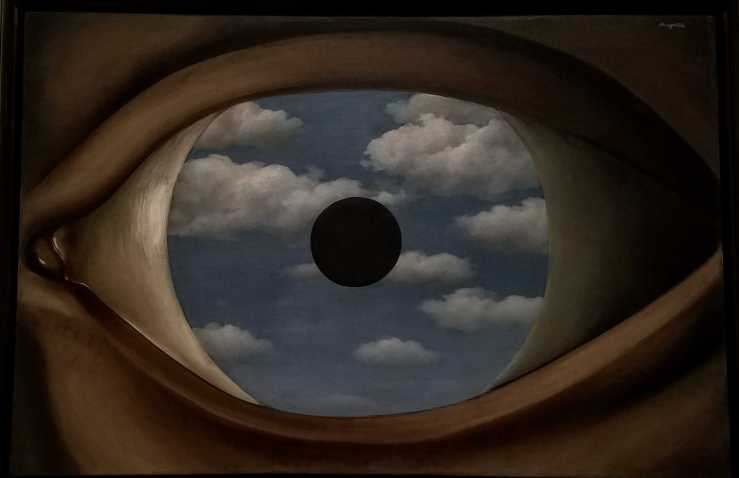@Bohemian_National_Hall
January 26th, 2017 & February 13, 2018
There is such thing as too much art if you are a young kid, it’s late afternoon and all you dream about is how to get hold of your PSP again; or maybe an ice cream treat; or -ideally- both!

Leaving MoMA for now; we’ll be heading to the Upper East Side next.
January 30th, 2017




The arrangement of objects on the floor (second image) is a sculpture by Richard Serra: Cutting Device: Base Plate Measure, 1969.
The artist took rolled lead sheets, wood beams, marble slabs, and steel piping, and then used a saw to slice them through. The objects were then arranged on the floor as they appeared directly after having been cut.
{…}
The row of framed prints on the wall show VALIE EXPORT, photographed by Peter Hassmann for her signature work Action Pants: Genital Panic, 1969.
<<This series of screenprints relates to a performance in which EXPORT reportedly walked into an experimental art-film house in Munich wearing crotchless trousers and a tight leather jacket, with her hair teased wildly, and roamed through the rows of seated spectators, her exposed genitalia level with their faces. Challenging the public to engage with a “real woman” instead of with images on a screen, she illustrated her notion of “expanded cinema,” in which the artist’s body activates the live context of watching. EXPORT’s defiant feminist action was memorialized in a picture taken the following year by the photographer Peter Hassmann in Vienna. EXPORT had the image, in which she holds a machine gun, screenprinted in a large edition and fly-posted it in public squares and on the street.>>
MoMA, From the Collection, 1960 – 1969.
January 30th, 2017
A stylish gentleman Mr. Katz is in his business suit and hat – the clean, sleek lines of his self-portrait devoid of all superfluous accentuating his steady, direct gaze.

<<Ambitious, elegant, impersonal, large in scale, and simultaneously timeless and reflective of its time—these, according to Katz, are the qualities of “high style” in painting, and they are also the qualities of many of his own works.>>
MoMA, views form the Permanent Collection
January 30th, 2017
Today’s composition of choice comprises some well known buildings partly glowing in the afternoon sun, paired with some of Marcel Duchamp’s famous ”readymades”. With all due respect to his undeniable contribution to the world of art, if I sign my compositions and designate them as artworks does that make me an artist?


<<Beginning in 1913 Duchamp challenged accepted artistic standards by selecting mass-produced, functional objects from everyday life and designating them as works of art. These sculptures, which he called “readymades,” were aimed at subverting traditional notions of skill, uniqueness, and beauty, boldly declaring that an artist could create simply by making choices. >>
MoMA, From the Collection, 1960 – 1969.
January 30th, 2017


<<“I had broken down the human body, so I set about putting it together again,” Léger said. The smooth surfaces of this volumetric woman, bunch of flowers, and book evoke mechanical parts assembled together… >>
January 30th, 2017
Art without

January 30th, 2017
Thus said Robert Rauschenberg, and who I am to doubt him. I could even picture it in frames. One next to the other, frame after frame after frame; each one an individual story, collectively a narrative of the world.





<<When Bontecou first exhibited her steel-and-canvas sculptures, many praised their aggressive, ominous qualities. Fellow artist Joseph Cornell described their gaping black cavities as summoning “the terror of the yawning mouths of cannons, of violent craters, of windows opened to receive your flight without return, and the jaws of the great beasts.”>>
MoMA, From the Collection, 1960 – 1969.
January 30th, 2017
«…Looking at You
I can read Your Mind
I am the maker of rules
Dealing with fools
I can cheat you blind…»

<<”Le Faux Miroir” presents an enormous lashless eye with a luminous cloud-swept blue sky filling the iris and an opaque, dead-black disc for a pupil. The allusive title, provided by the Belgian Surrealist writer Paul Nougé, seems to insinuate limits to the authority of optical vision: a mirror provides a mechanical reflection, but the eye is selective and subjective. Magritte’s single eye functions on multiple enigmatic levels: the viewer both looks through it, as through a window, and is looked at by it, thus seeing and being seen simultaneously. The Surrealist photographer Man Ray, who owned the work from 1933 to 1936, recognized this compelling duality when he memorably described ‘”Le Faux Miroir” as a painting that “sees as much as it itself is seen.”>>
MoMA, views from the permanent collection.
January 30th, 2017
subjective worldview
Actor, writer, cook and author
Travel inspiration & tips to explore Strasbourg
Writer
joy, happiness, travel, adventure, gratitude
"Rêve onirique & Bulle d'évasion"
makes pretty things on paper
This WordPress.com site is Pacific War era information
Welcome to my curious world of words....
Photographs, music and writing about daily life. Contact: elcheo@swcp.com
Free listening and free download (mp3) chill and down tempo music (album compilation ep single) for free (usually name your price). Full merged styles: trip-hop electro chill-hop instrumental hip-hop ambient lo-fi boombap beatmaking turntablism indie psy dub step d'n'b reggae wave sainte-pop rock alternative cinematic organic classical world jazz soul groove funk balkan .... Discover lots of underground and emerging artists from around the world.
A 365 analogue photography project
Barcelona's Multiverse | Art | Culture | Science
Een digitaal atelier aan de (zee)slag.
‘Doodling Ambiguity’s in Ink.’
Miscellaneous photography
Glimpses along the way on a journey of discovery into symmetry...